U3 AOS2 (2) - Revision
1/32
There's no tags or description
Looks like no tags are added yet.
Name | Mastery | Learn | Test | Matching | Spaced |
|---|
No study sessions yet.
33 Terms
MEMORY
3 fundamental processes of memory:
encoding: conversion of sensory info into a usable form so that it can be neurologically represented (‘placed’) and stored in memory
storage: retention of the encoded information over time
retrieval: recovery of stored info for use when needed
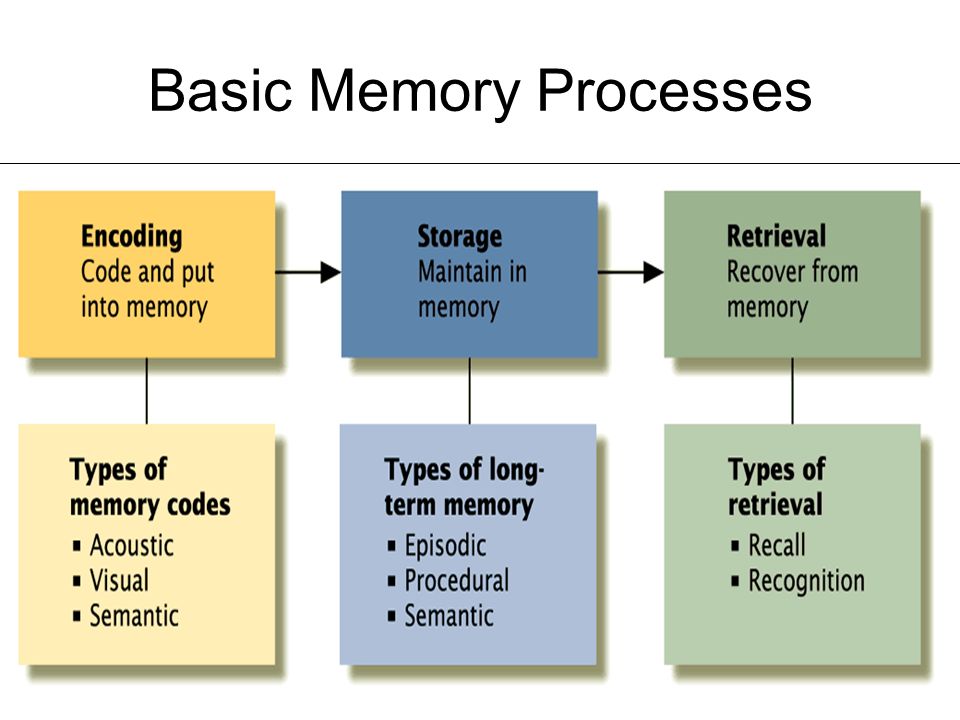
MEMORY
Without memory learning is…
not possible - learning is stored in memory
ATKINSON-SHIFFRIN MULTI-STORE MODEL OF MEMORY
Outlines:
Each store processes + differs:
3 stores of memory:
the three seperate stores of memory, which interact through the processes of encoding, storage and retrieval
each store processes info in different ways. They differ in terms of function (purpose / roles), capacity (amount of info it can hold at any given moment) and duration (lenght of time it can hold info)
sensory memory (SM), short-term memory (STM), long-term memory (LTM)

SENSORY MEMORY
Sensory info is assumed to be retained in its…
Capacity:
Duration:
If we do not pay attention to info in SM / no further processing occurs…
Incoming sensory info is said to be stored in…
2 sensory registers:
‘raw’ sensory form (rather than an encoded form)
capacity: potentially unlimited
duration: short (0.2-4 seconds)
the info is permanently lost from experience
separate sensory systems (‘sensory registers’)
2 SENSORY REGISTERS:
iconic memory
echoic memory
ICONIC MEMORY
Sensory register for:
Visual images are retained in what form?
Duration:
incoming visual info
their ‘raw’ / original sensory form
about 0.3 seconds (just long enough to recognise / process the sensory info)
ECHOIC MEMORY
Sensory register for:
In echoic memory, sound…
Duration:
incoming auditory info
lingers like an echo
about 3-4 seconds - generally long enough to select what has been heard for further processing / interpretation before the sound disappears completely
SHORT-TERM MEMORY (STM)
Capacity:
Duration:
Info is no longer…
Info enters from SM / is retrieved from LTM to STM after…
STM holds what info?
Info is:
capacity: limited (7±2)
duration: retained for a relatively short time - unless renewed in some way
an exact replica of the sensory stimulus (is an encoded version)
it is payed attention to
all of the info you are consciously aware of at any moment in time
maintained / manipulated
DURATION OF SHORT-TERM MEMORY (STM)
Maintenance rehearsal and continual repetition can keep info in STM…
Without rehearsal duration is:
After 12 seconds:
By about 18 seconds:
Some info (especially ‘muscle memory’ info) can occasionally linger for:
Duration can be increased by:
indefinitely
18-20 seconds, possibly up to 30 seconds
recall starts to decline
almost all of the info disappears if not renewed in some way
up to 30 seconds
INCREASED BY:
maintenance rehearsal: repeating new info over and over again to keep in STM for as long as possible
elaborative rehearsal: meaningfully linking new info to info already stored in STM
CAPACITY OF SHORT-TERM MEMORY (STM)
How many bits of unrehearsed info can be stored?
Is capacity the same for each individual?
Info stored in STM is lost through (2):
Capacity can be increased by:
7 plus or minus 2
no - some people have smaller or larger STM capacities
LOST THROUGH:
decay: not being used / not rehearsed
displacement: being pushed out to make room for other important info
INCREASED BY:
chunking: grouping smaller, separate bits of info into larger units / ‘chunks’ of info
LONG-TERM MEMORY (LTM)
Capacity:
Duration:
2 different types of LTM:
capacity: potentially unlimited
duration: possibly permanent
DIFFERENT TYPES:
explicit memory
implicit memory

EXPLICIT MEMORY
Unconsciously / consciously retrieved and stated?
Also known as:
Involves what kind of knowledge / info?
Attempt to retrieve previously stored info is:
2 sub-types:
consciously retrieved / stated
declarative memories (because we can declare / state them)
general knowledge / information about personal experiences - needed to retrieve in response to a specific need / request to do so
deliberate / conscious
SUB-TYPES:
episodic memory
semantic memory
EPISODIC MEMORY
Definition:
Includes:
episodic memory: the long-term memory of personally experienced events (‘what’) associated with a particular time (‘when’) and place (‘where’)
the self as the initiator or recipient of some action
AUTOBIOGRAPHICAL MEMORY consists of information stored in:
episodic memory, semantic memory, or a mix of the two
SEMANTIC MEMORY
Definition:
It includes (6):
It is not ‘tagged’ with:
Is the self important in info?
semantic memory: the long-term memory of facts and knowledge about the world
INCLUDES:
facts and knowledge of the kind learned in school
everyday facts and general knowledge
the meaning of words
rules
concepts
areas of expertise
details of time / place
no
IMPLICIT MEMORY
Unconsciously / consciously retrieved?
Also known as:
Occurs (effort):
Existence of a specific memory can be:
2 sub-types:
unconscious
non-declarative memories (‘memories without awareness’)
effortlessly
implied / inferred from responses that can be observed
2 SUB-TYPES:
procedural memory
classically conditioned memory
PROCEDURAL MEMORY
Definition:
Memory of ‘how…
Often little or no:
Hard to:
procedural memory: the long-term memory for the skills involved in particular tasks
‘how to do something’
intentional / conscious attempt to retrieve
hard to put these memories into words
CLASSICALLY CONDITIONED MEMORIES
Conditioned responses to:
Particularly those involving:
What kind of reflexes are acquired through CC and how will they occur?
conditioned responses to conditioned stimuli acquired through CC
fear / anxiety
simple conditioned reflexes - will occur automatically without conscious awareness in response to a relevant stimulus
BRAIN AREAS INVOLVED IN LONG-TERM IMPLICIT / EXPLICIT MEMORIES
LTM is not…
5 brain areas involved:
Areas involved in EXPLICIT memory (3):
Areas involved in IMPLICIT memory (2):
Memories are most likely stored in:
LTM is not stored in one particular area of the brain
5 BRAIN AREAS:
hippocampus
amygdala
neocortex
basal ganglia
cerebellum
EXPLICIT:
hippocampus
amygdala
neocortex
IMPLICIT:
basal ganglia
cerebellum
The areas that initially processed the info
HIPPOCAMPUS
Role:
Not involved in:
Helps ensure explicit memories are:
What is required to achieve long-lasting explicit memories (+ideal period)?
Does it store memories?
Has a significant role in achieving links between…
Also important for what other kind of memory?
role: formation and encoding of new semantic and episodic memories
the formation of implicit memories
neurologically stable and long-lasting
consolidation: the neurobiological process of making a new formed memory stable and enduring following a learning experience (30 minutes)
no - it transfers them to the neocortex for long-term storage
interrelated bits of memory - by integrating new incoming info with existing info to form networks of memory
spatial memory: explicit memory for the physical location of objects in space - involved with navigation + learning / remembering locations
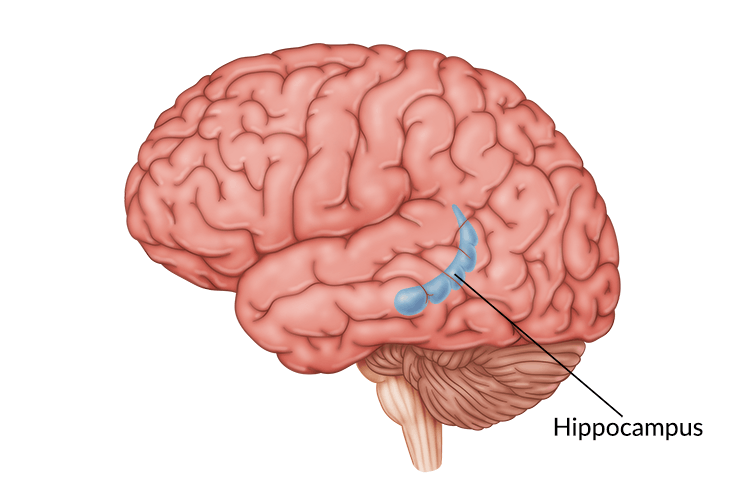
AMYGDALA
Role:
Involved in:
Does not:
Interacts with what other brain area in the processing / retrieval of explicit memories?
When an event is particularly emotional it signals the hippocampus to… (+ how)
What kind of implicit memory is it involved in?
role: processing / regulating emotional reactions (particularly fear / anger)
the formation + consolidation of a wide range of other emotional memories
store memories - but is important for processing / encoding
hippocampus - interacts as the hippocampus processes the event, and the amygdala processes the emotional feeling attached to the event
encode the memory more ‘deeply’ - presence of noradrenaline stimulates amygdala to attach more emotional significance to experience = amygdala signals hippocampus for encoding / storage of relevant emotional details during memory consolidation process
classically conditioned memory - involved due to role in the experience of associated emotion
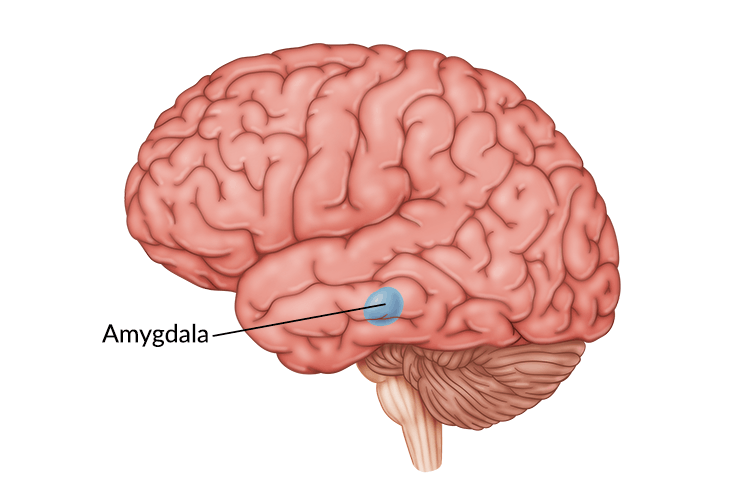
NEOCORTEX
Percentage of cerebral cortex:
Roles (range of memory processes):
LTM stores tend to:
semantic / episodic memories are:
SEMANTIC memories tend to be stored:
EPISODIC memories tend to be stored:
90% of cerebral cortex
roles: interaction with the hippocampus in the formation, consolidation, storage + retrieval of explicit memories
gradually become independent of the hippocampus, amygdala + other medial temporal lobe structures
widely distributed throughout the neocortex - permanent storage tends to be in areas where the relevant info was first processed
semantic: most likely in the frontal and temporal lobes
episodic: most likely in the right frontal and right temporal lobe (damage to right hemisphere = more likely unable to retrieve explicit memories)

BASAL GANGLIA
Role:
Involved in encoding / storing what kinds of memories?
What process is it involved in?
Via its connection to what other part of the brain, what type of implicit memory does it encode / store?
Connection to amygdala:
Has been associated with:
role: long-term implicit memories involving motor skill - associated with voluntary movements (fluidity of movement)
encoding and storing procedural memories + classically conditioned memories - that are associated with unconscious habits, behaviours, procedures
habituation - stores memory of environmental stimulus and lessens the sensitivity to it
via its connection with the cerebellum, it encodes and stores procedural memories
the amygdala is involved in encoding the emotional component of classically conditioned memories + the basal ganglia is involved in encoding / storing responses learnt through classical conditioning (movement)
associated with: impaired movement of people diagnosed with parkinson’s disease
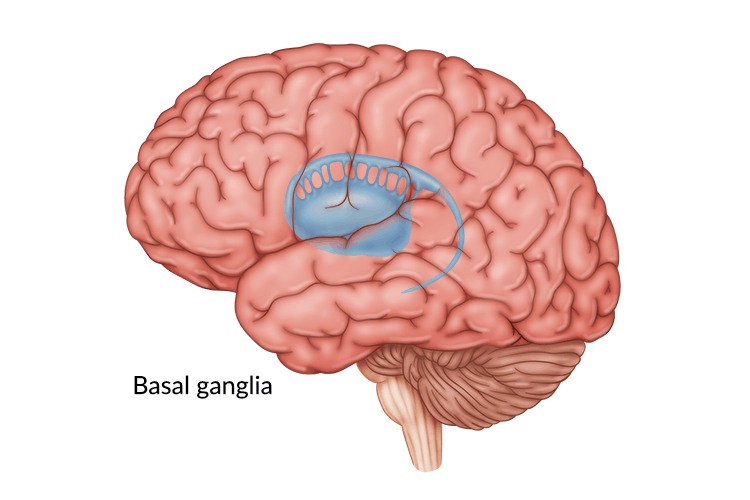
CEREBELLUM
Involved in:
Crucial for:
Forms and stores implicit memories of:
Has involvement in what kind of activities?
involved: the encoding and temporary storage of implicit procedural memories
crucial for: motor learning and the experience of voluntary movements (but not long-term storage) - important role in everyday purposeful movement
simple reflexes acquired through classical conditioning
activities requiring a skilled sequence of movements - requiring timing + made with speed / ease / fluency
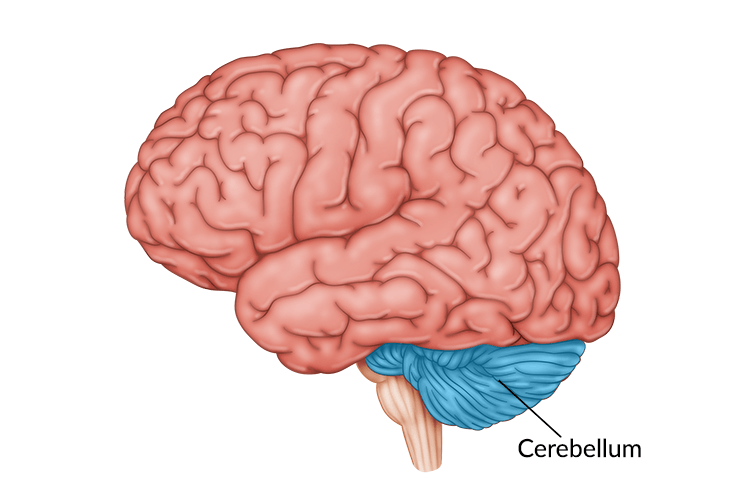
ROLE OF EPISODIC AND SEMANTIC MEMORY IN RETRIEVING AUTOBIOGRAPHICAL EVENTS AND IN CONSTRUCTING POSSIBLE IMAGINED FUTURES
The hippocampus is primarily involved in the retrieval of what kind of memory?
The frontal / temporal lobes are involved in the retrieval of what kind of memory?
The retrieval of autobiographical events involves the activation of which brain areas?
Brain areas activated when retrieving autobiographical events are:
Episodic memory allows us to:
Imagined futures do not always…
episodic memories
semantic memories
both the hippocampus and the frontal and temporal lobes - suggesting that autobiographical events involve an overlap of episodic / semantic memory
also activated when constructing possible imagined futures
‘mental time travel’ - not only mentally travel backward in time to recall past events, but also into the future
do not always become a reality - the ability to do so is important for ‘trying out’ different scenarios which help guide future behaviour
ALZHEIMER’S DISEASE
Characteristics (2):
Is caused by:
2 primary lesions associated with alzheimer’s disease:
Damage is associated with what brain area?
Effects of alzheimer’s disease (2):
CHARACTERISTICS:
age related - but not normal part of ageing process
conclusive diagnosis can only be made post-mortem
caused by: a build up of insoluble proteins within and between neurons - that disrupts their function and ultimately destroys them
2 PRIMARY LESIONS:
amyloid plaques: fragments of the protein beta amyloid - that accumulate into insoluble plaques that inhibit communication between neurons
neurofibrillary tangles: accumulation of the protein tau - that forms insoluble tangles within neurons, which then inhibit the transportation of essential substances and eventually kill the neuron entirely
hippocampus
EFFECTS:
patients struggle to remember semantic and episodic components of personally experienced events
lack the capacity to draw on episodic and semantic memories in order to plan / construct new imagined future scenarios
PROGRESS OF ALZHEIMER’S DISEASE
Areas that tend to be damaged first:
Progresses to:
Which memories are primarily affected?
Which memories tend to remain intact / less severely affected?
In some cases, the disease starts in:
cortical areas - disrupting STM
deeper parts in the brain (hippocampus / medial temporal lobe) - affecting LTM
explicit (episodic + semantic)
implicit memories
hippocampus
APHANTASIA
Mental imagery refers to:
A person with aphantasia is unable to:
When creating mental imagery, individuals use…
People with aphantasia have a weaker link between (brain area):
People with aphantasia struggle to (2):
mental imagery: the visual representations and experiences of sensory info without the presence of sensory stimuli
generate mental imagery
sensory info that has been organised in STM and then transferred to LTM to recreate perceptual memories (sensory info can be stored in both semantic / episodic memory)
weaker link between frontal + occipital lobe (visual processing centre)
STRUGGLE TO:
retrieve autobiographical events
construct possible imagined futures
MNEMONICS
Can be:
Uses information already stored LTM by:
Makes info:
Mnemonics used by WRITTEN traditions:
Mnemonics used by ORAL traditions:
basic or complicated
forging a link / association between the new info to be remembered and info previously encoded
more elaborate - additional info stored tends to be more richly / deeply encoded + makes it easier to locate / retrieve because it had enhanced organisation in LTM
WRITTEN:
acronym
acrostic
the method of loci
ORAL:
sung narratives
songlines
ACRONYMS
Words are:
They aid the:
First letter of each word acts as a:
pronounceable
encoding and storing of memory - they link info to words / sounds we already know
retrieval cue - helping bring the targeted info into STM for use
ACROSTICS
Difference to acronym:
Acrostics link…
First letter of each word acts as a:
sentence constructed from seperate words - not single pronounceable word
link new info to familiar phrases / sentences we already know - helping encode / store info
retrieval cue - helping bring the targeted info into STM for use
THE METHOD OF LOCI
Involves visualising items in:
5 Steps involved:
specific / well-known locations
5 STEPS:
visualise and imagine a familiar route / place
select several memorable places (landmarks) on the route or in their chosen place
create visual imagery for each item that needs to be remembered
link each item to one of the identified memorable landmarks
imagine they are walking through the house or along the familiar route and retrieve each item by observing the items at each landmark
SUNG NARRATIVES
Definition:
Can enhance:
Traditional law describing how sung narratives are communicated (3):
Traditional law ensures that:
sung narratives: stories that share important cultural, ecological, and survival info through the use of singing, harmony and rhythm
TRADITIONAL LAW:
what is sung
who sings and to whom
where and when a sung narrative is communicated
info being passed on is preserved
SONGLINES
Difference from sung narratives:
They are expressions of:
Larger bits of info incorporating…
Maps of:
bigger info (more generalised, compared to sung narratives smaller info more direct to mob / group)
expression of ecological and spiritual knowledge that provide info for survival
incorporating multiple / smaller facts of knowledge + spread on and throughout country
maps of the land